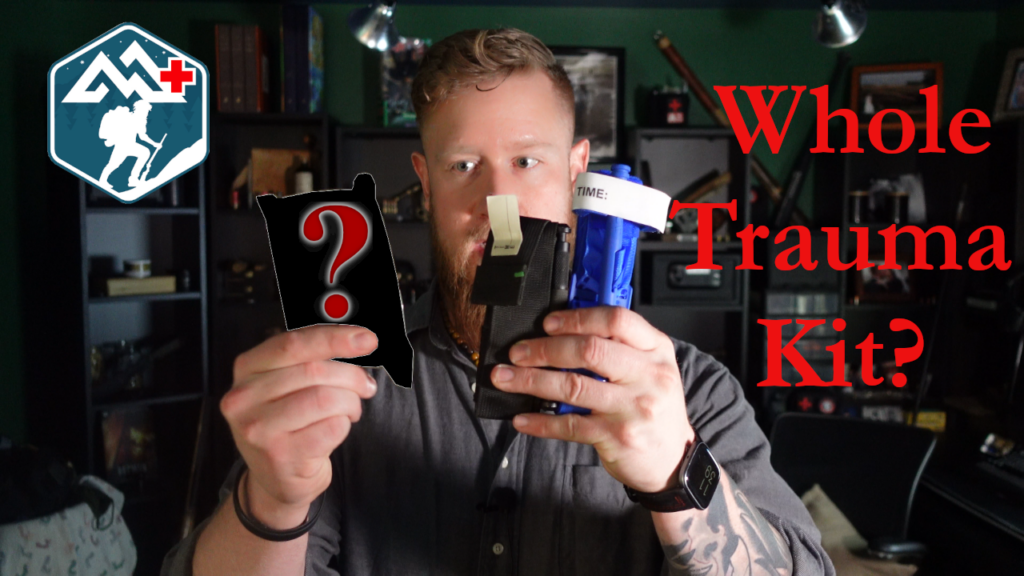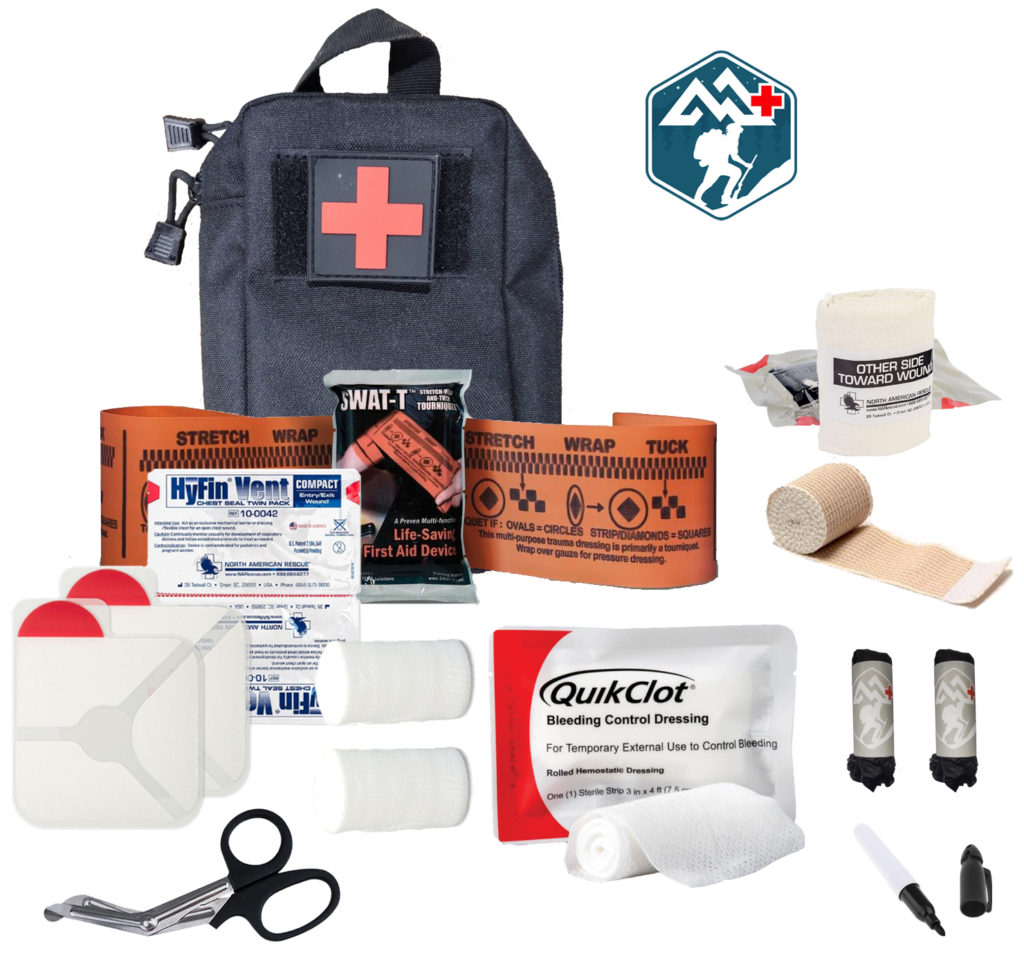Trauma Gear: The 1 Item That’s Worth 5

Working as a Corpsman and EMT, I wasn’t given the choice of what medical gear I used. People with much more experience, training and education decided ahead of time what was acceptable and what wasn’t.
As a result, I only used gear that was issued and available to me and I never thought about if there might be a better option because it wouldn’t matter if there was. It would go against SOPs (Standard Operating Procedures) and that was always strictly forbidden.
Now that I’m free to explore and look into other life saving equipment, I’m given the opportunity to search out the answers for myself and question my reasons for doing what I do.
War is the best place to study trauma because of how many casualties there are. Data is collected, tests and experiments are done, and medicine greatly benefits from all the opportunities to study how life-threatening wounds effect the human body, and how we can better prevent death.
My military training has given me a detailed look into why the military does what it does, and how significantly it differs from the civilian world. Most citizens are not confronted daily by the same obstacles the military must take into consideration.
This means, not everything the military does is a good idea for the civilian world.
The CoTCCC (Committee of Tactical Combat Casualty Care) is the government think tank made up of highly qualified medics and trauma doctors. Their goal is to discover the best ways for keeping our warriors alive after they’ve been seriously wounded in combat.
They make frequent recommendations on what types of gear is allowed and what isn’t, and since they’re the official word, most of the civilian world tends to follow suit, whether or not it’s actually the right choice for them.
I have a decent amount of real-world experience with the most popular TQs out there, the CAT and SOF-T Wide, and I have absolutely no problem with them as life-saving devices. I’ve personally seen them save lives and know they work. So, I’m not saying those TQs are worthless.
However, since civilians don’t carry a medic’s full battle rattle, there isn’t room always room to have bleeding control when you need it. Carrying a CAT or SOF-T on a daily basis is uncomfortable because of the awkward shape taking up what little space you have in your pockets or purse.
On top of this, there’s also the fact the most TQs are limited to only being able to treat wounds on the arms and legs. If you have a wound in your neck, arm pit or groin, you’re S.O.L.
It would be nice to have a tourniquet that’s able to handle more then one type of injury. If only something like that existed…
The SWAT-T
Carrying this one item is like carrying a complete trauma kit. While it has yet to make the list of approved TQs by the CoTCCC, it can do A LOT of things that other tourniquets can’t.
Here are some of the ways the SWAT-T can be used, besides extremity bleeding control:
- Sling. The SWAT-T can be tied into a loop, and draped around the neck to provide a sling for fractured arms.
- Splints. It can be used to keep splints in place on arms and legs.
- Pressure dressing. Junction wounds like in the armpits, groin and neck can be treated effectively by using the SWAT-T as a pressure bandage.
- Chest Seals can be improvised effectively with just a plastic bag and some tape. That’s great if you have tape handy or the time to go hunt some down. If not, you can use the SWAT-T to hold the plastic in place. And since the rubber of the SWAT can also act as an occlusive dressing, you don’t need to find plastic. Just be sure that you don’t wrap too tightly, or it will restrict the chest’s natural ability to expand and bring in oxygen.
Packability
The SWAT-T is the easiest to carry in a pocket or purse every day. It’s small, flat, and rectangle so it won’t take up much room. And since it’s made of pliable rubber, there’s no chance it’s going to dig into you when you sit down.
This also means that you can stock your trauma kit with more than one, while trying to pack multiple CATs and SOF-Ts can be a hassle to fit in around all the other stuff you might need, like chest seals and pressure dressings.
Ok, if it’s so great, why doesn’t the CoTCCC approve it for the military?
SWAT-T is an acronym that stands for “Stretch, Wrap, And Tuck – Tourniquet,” the rubber band is pulled tight, wrapped around the injured limb, then tucked under itself to keep it in place. This method of securing the TQ (by tucking it under itself) is perfectly acceptable in normal civilian circumstances. But combat operations are anything but normal and the casualty may need to be dragged, carried, hoisted over walls and fences and the tuck securing method isn’t as solid as the CAT or SOF-T Wide.

There’s a risk for any TQ to become dislodged accidently, which is why I always recommend frequent checks to ensure everything is still working properly. The risk is just a little higher with the SWAT-T. This is why the SWAT-T has been ruled out for combat, not because it doesn’t work.
And even though it’s not officially recommended by the Co-TCCC, I personally know members of elite tier 1 units who carry the SWAT-T on a regular basis. It’s especially popular with clandestine operators who are looking to carry as little equipment as possible to better blend in with the local population. They carry the SWAT-T for all the reasons I’ve laid out in this article.
It’s effective, the most versatile TQ on the market, and small enough to slip into a pocket. It’s like carrying a complete trauma kit in one handy, compact package. Don’t feel like you need to throw out those other TQs you have, they still have their place, but adding 1, or 2 (or 3) into your trauma kit means you won’t be taking up too much extra space and you have significant redundancy and the confidence to know that you can handle a very bad situation.
If you would like to know more about how to use and apply the SWAT-T, Mountain Man Medical has released a free online training course that will show you how to use the contents in your new trauma kit so you can be confident in the midst of a crisis.


As a substitute teacher I am carrying your Yellowstone kit. I got the kit with the CAT. I also got a RATs, (not your product). It’s good for smaller people. So I have in effect 3 tourniquets. Hope that I will never have to use them but I got them. I showed my kit to one of the gym teachers and he is going to get your kit and training.
Bob Peterson
Hi Brian, don’t know if this is the right format for this. In line with you video on expidient tqs, I carry a swat t , celox, h&h mini compress in a ziplock. Its about 3x4x2 and works for pocket carry. My question is have you ever used/ looked at the nato tq? It folds alot flatter than the cat and its better than the rats
I keep these in every trauma kit and give them out to friends and family. I’ve used these in real world situations and live tissue training. These are so adaptable – junctional bleeds, pressure dressing, splints, sprain wraps, and of course tourniquets.
When I took the TCCC course, they warned us against the SWAT-T because of its tendency to slip once it gets bloody.
It depends on friction between the layers of rubber to maintain the tension and stay wrapped, but the blood acts as a lubricant and disrupts the friction that holds it in place.
Difficult to wrap a very bloody wound and doesn’t like to stay in position. Also, as another user wrote, it’s difficult to self-administer.
Yeah, no TQ is perfect, they all have their downfalls, but good point. Thanks for adding that to the discussion.
I too was a Navy Corpsman and served three tours in ‘Nam (in combat all three tours). Not once did anyone in or out of the military did anyone tell me what I could not carry in medical supplies. I was restricted only by my ability to stuff more things in more places. I carried a 39 lb Unit 1 (or Unit 10) stuffed with everything from abd bandages, tourniquets, tincture of benzoin, and tape (lots of it) and three or four ace bandages plus a roll of wire mesh to used as a splint (never used it always wound up improvising) I carried bodies and had others carry more. My dressings did NOT fall off. Sounds like you treatment level was more like Army medic first level. Could be wrong but doesn’t sound like my training and experience. Different era I guess
Hoorah Doc! Thanks for your service. Yeah things have changed a lot, thanks to people like you cutting a path through the jungle and showing us younger warriors the right way.